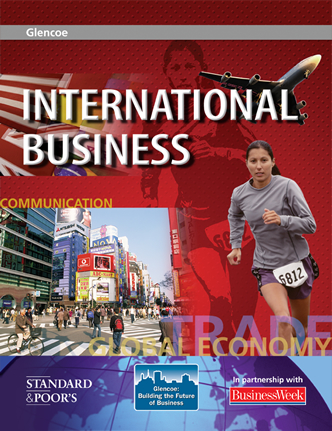
International BusinessChapter 3: International CommunicationsWorld Market Passport
The Environment Situated in Northern Europe, Finland is one of five Nordic countries. It shares land borders with Sweden to the west, Russia to the east, Norway to the north, and Estonia to the south. Surrounding waters include the Baltic Sea, the Gulf of Bothnia, and the Gulf of Finland. This country is home to over 187,000 lakes, including Saimaa, the fifth largest in Europe. Finland's landscape is primarily flat, although there are low-lying hills. Extensive forests cover some 75 percent of the land, while over 179,000 islands dot the waters. The country's climate varies, with cold harsh winters and summers warmed by the Gulf Stream. Due to post-glacial rebound, Finland's surface area grows by about 2.7 square miles each year. Because of its proximity to the Arctic Circle, the sun does not set in northern regions for 73 days during summer and does not rise for 51 days each winter. History Evidence indicates that Finland was first settled around 8500 BC, during the Stone Age. During the Bronze Age (500 BC to 1200 AD) contact widened with neighboring regions of Scandinavia, northern Russia, and the Baltic areas. A suspected introduction of Christianity by Sweden's King Erik occurred in 1154, which began a 700-year association with the Kingdom of Sweden. Russia occupied Finland twice during the 18th century, offering protection from Sweden. In 1809, Finland became an autonomous Grand Duchy under the Russian Empire until 1917. But after the Bolshevik Revolution in Russia, Finland declared its independence. A brief Civil War led the country politically to the right, and though it endured further fighting with the Soviet Union during World War II, today its government remains a parliamentary democracy. In 1995, Finland joined the European Union. Culture and People With just over 5.2 million people, Finland is one of the most sparsely populated countries in Europe. Although the country has received many immigrants from neighboring Nordic and Russian regions, its language, Finnish, is now spoken by 90 percent. For decades, Finland has had a highly industrialized, largely free-market economy, with key economic forces in wood, metal, engineering, telecommunications, and electronic products. Helsinki, the capital city, is its largest city. Finnish myths and beliefs can be found in popular Finnish folk music, while there is also a renowned metal music scene. Click to hear the music of Finland.
|  |
















